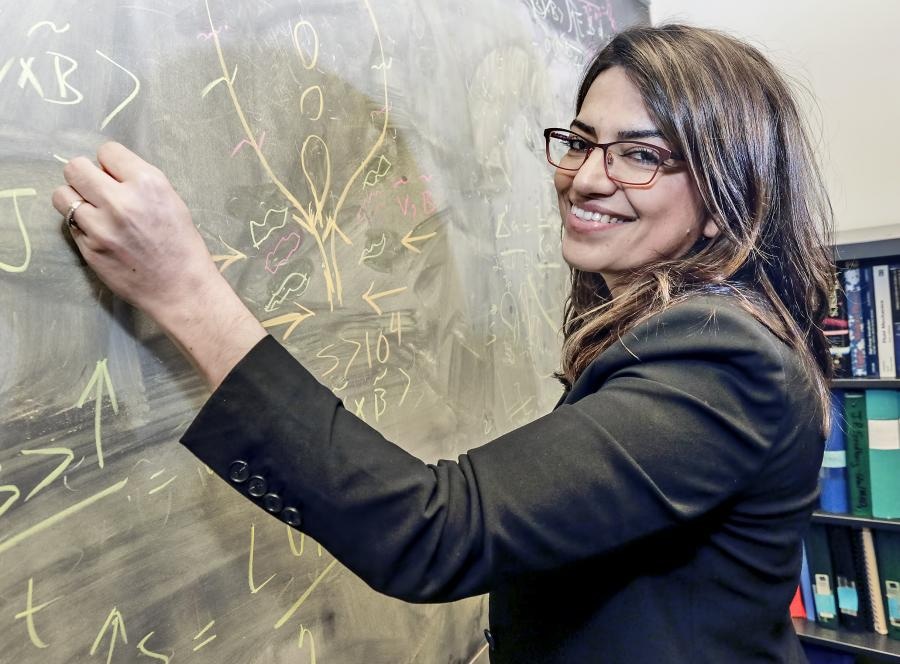Nov 19 2019
A barrier to the reproduction of fusion reactions within facilities known as tokamaks is that the generation of current in plasma that helps develop confining magnetic fields occurs in pulses.
 PPPL physicist Fatima Ebrahimi. Image Credit: Raphael Rosen.
PPPL physicist Fatima Ebrahimi. Image Credit: Raphael Rosen.
Pulses produced by an electromagnet and running down the center of the tokamak would render the steady-state generation of fusion energy challenging to realize. To overcome the challenge, physicists have devised a method called transient coaxial helicity injection (CHI) to produce a current that is not pulsed.
Fatima Ebrahimi, a physicist from the U.S. Department of Energy’s (DOE) Princeton Plasma Physics Laboratory (PPPL), has made use of high-resolution computer simulations to examine the viability of this method. The simulations demonstrate that CHI could continuously generate the current in larger, more powerful tokamaks than the existing ones to create stable fusion plasmas.
Stability is the most important aspect of any current-drive system in tokamaks. If the plasma is stable, you can have more current and more fusion, and have it all sustained over time.
Fatima Ebrahimi, Physicist, Princeton Plasma Physics Laboratory
Ebrahimi is the author of a paper that describes the study outcomes in Physics of Plasmas.
During fusion, the process that powers the sun and stars, light elements fuse together in the form of plasma—the hot, charged state of matter formed of atomic nuclei and free electrons—that produces enormous amounts of energy. Researchers are looking for ways to reproduce fusion on Earth for an almost endless supply of power to produce electricity.
The CHI method involves replacing an electromagnet known as a solenoid that stimulates current in the existing tokamaks. CHI creates the critical current by spontaneously producing magnetic bubbles (or plasmoids) within the plasma.
The latest high-resolution simulations support the hypothesis that an array of plasmoids advancing through the plasma in next-generation tokamaks could produce the current that creates the confining fields. Furthermore, the simulations also revealed that the plasmoids would remain unaffected even if they are struck by three-dimensional instabilities.
Going forward, Ebrahimi intends to simulate CHI startup while incorporating even more physics related to the plasma. This would offer insights to further enhance the process, as well as to extrapolate toward next-step devices.
That’s a little bit harder, but the news right now is that these simulations show that CHI is a reliable current-drive technique that could be used in fusion facilities around the world as they start to incorporate stronger magnetic fields.
Fatima Ebrahimi, Physicist, Princeton Plasma Physics Laboratory
This study was supported by the DOE Office of Science (Fusion Energy Sciences). Calculations were carried out partially by the National Energy Research Scientific Computing Center (NERSC), a DOE Office of Science User Facility at Lawrence Berkeley National Laboratory in Berkeley, California.